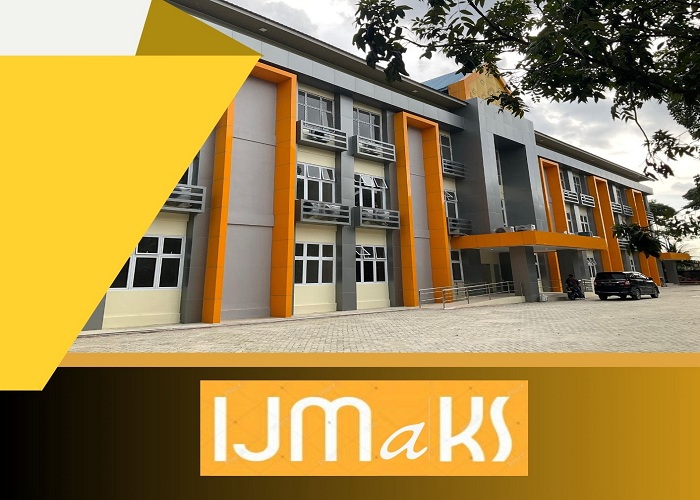Factors Affecting Post-Crisis Organizational Performance at PT Garuda Indonesia (Persero) Tbk
Organizational Performance, Post-Crisis, Garuda Indonesia, Leadership, HR Management
Keywords:
Kinerja Organisasi Pasca-Krisis, Garuda Indonesia, Kepemimpinan, Manajemen SDM, Organizational Performance, Post-Crisis, Garuda Indonesia, Leadership, HR ManagementAbstract
This article discusses the factors that affect post-crisis organizational performance with a case study on PT Garuda Indonesia (Persero) Tbk. This research aims to identify and analyze internal and external factors that play a role in the recovery of the company's performance after facing a multidimensional crisis, including the impact of the COVID-19 pandemic, debt burden, and management conflicts. The method used is a systematic literature review with a descriptive qualitative approach, combining sources such as scientific journals, annual reports, and contextual data. The results of the study show that PT Garuda Indonesia's performance recovery is influenced by a combination of internal factors, such as transformational leadership, adaptive human resource management, resilient organizational culture, and technological innovation. On the external side, government support, regulation, and public trust also play a significant role. This study proposes an Integrated Crisis Recovery Framework (ICRF) model as a holistic recovery framework that integrates these four factors. These findings contribute to academics and practitioners in understanding the dynamics of post-crisis organizational recovery, especially in the state-owned sector in developing countries
Downloads
References
Bakker, A. B., & Demerouti, E. (2017). Job demands-resources theory: Taking stock and looking forward. Journal of Occupational Health Psychology, 22(3), 273–285. https://doi.org/10.1037/ocp0000056
Bank Indonesia. (2023). Laporan stabilitas sektor keuangan 2023. https://www.bi.go.id
Barney, J. (1991). Firm resources and sustained competitive advantage. Journal of Management, 17(1), 99–120. https://doi.org/10.1177/014920639101700108
Bass, B. M., & Riggio, R. E. (2006). Transformational leadership (2nd ed.). PsychologyPress.
Cameron, K. S., & Quinn, R. E. (2011). Diagnosing and changing organizational culture. John Wiley & Sons.
Civil Aviation Authority of Singapore. (2022). Regulasi dukungan pemerintah untuk maskapai nasional. https://www.caas.gov.sg
Coombs, W. T. (2007). Ongoing crisis communication: Planning, managing, and responding.SAGE.
Deloitte. (2021). Aviation sector post-pandemic recovery report. Deloitte Insights.
DiMaggio, P. J., & Powell, W. W. (1983). The iron cage revisited: Institutional isomorphism and collective rationality. American Sociological Review, 48(2), 147–160. https://doi.org/10.2307/2095101
Elkington, J. (1997). Cannibals with Forks: The Triple Bottom Line of 21st Century Business. Capstone.
Garuda Indonesia. (2023). Annual report 2022: Restructuring for recovery. PT Garuda Indonesia (Persero) Tbk.
Herbane, B (2019). Rethinking organizational resilience and strategic renewal post-crisis. Strategic Change, 28(2), 91-98. https://doi.org/10.1002/jsc.2245
IATA (2023). Annual Review of Air Transport Industry Performance.
International Air Transport Association (IATA). (2024). Asia-Pacific aviation recovery dashboard. IATA Publications.
Kementerian BUMN. (2023). Keputusan Menteri BUMN No. 12/2023 tentang Penyertaan Modal Negara ke PT Garuda Indonesia. https://www.bumn.go.id
Kementrian BUMN. (2022). Restrukturisasi BUMN strategis: Studi kasus Garuda Indonesia. Jakarta: Kementrian BUMN.
Kementerian Perhubungan Republik Indonesia. (2023). Kebijakan restrukturisasi aviasi nasional: Laporan tahunan. https://kemenhub.go.id
Kaplan, R.S., & Norton, D.P. (1996). The Balanced Scorecard: Translating Strategy into Action. Harvard Business Press.
Kompas. (2023, Mei 15). Garuda Indonesia bangkit dari krisis: Analisis transformasidigital. https://www.kompas.com
Mintzberg, H. (1994). The rise and fall of strategic planning. Free Press.
PT Garuda Indonesia. (2024). Laporan program Garuda Care dan pelatihan ulang 2021-2023. [Dokumen internal].
Priem, R. L., & Butler, J. E. (2001). Is the resource-based view a useful perspective for strategic management research? Academy of Management Review, 26(1), 22–40. https://doi.org/10.5465/amr.2001.4011928
Qantas Airways. (2023). Financial year 2023 results presentation. https://www.qantas.com/investors
Robbins, S. P., & Coulter, M. (2018). Management (14th ed.). Pearson.
SABRE (2023). Digital Transformation ROI in Aviation: Global Benchmark Study.
Seeger, M. W., Sellnow, T. L., & Ulmer, R. R. (2003). Communication and organizational crisis. Greenwood.
Singapore Airlines. (2023). Annual Report 2023: Resilience and Recovery. https://www.singaporeair.com/annualreport
Skytrax. (2024). World airline star rating 2024. https://www.airlinequality.com
Garuda Indonesia Customer Service. (2024). Laporan keluhan pelanggan Triwulan I 2024.
Richard, P.J., et al. (2009). Measuring Organizational Performance: Towards Methodological Best Practice. Journal of Management.
Ulrich, D. (2016). HR from the outside in. McGraw-Hill Education.
World Health Organization (WHO). (2023). Mental health at work in the aviation industry. WHO Press.
Downloads
Published
How to Cite
Issue
Section
License
Copyright (c) 2025 Jannatul Muslimah

This work is licensed under a Creative Commons Attribution-ShareAlike 4.0 International License.



























